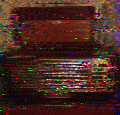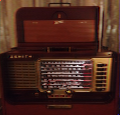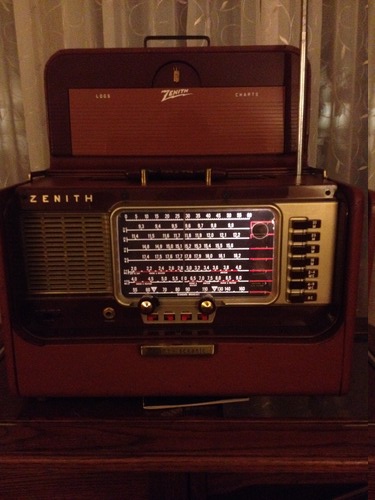www.rhci-online.net/radiogram/radiogram.htm
██████╗ ██╗ ██████╗ ██╗ ██████╗ ██╗ ██╗
██╔══██╗██║██╔════╝ ██║ ██╔══██╗╚██╗██╔╝
██║ ██║██║██║ ███╗██║ ██║ ██║ ╚███╔╝
██║ ██║██║██║ ██║██║ ██║ ██║ ██╔██╗
██████╔╝██║╚██████╔╝██║ ██████╔╝██╔╝ ██╗
╚═════╝ ╚═╝ ╚═════╝ ╚═╝ ╚═════╝ ╚═╝ ╚═╝
RSID:
<<2016-04-25T20:00Z MFSK-32
@
6070000+1500>>
Hello and welcome to DigiDX 10, a weekly review of the latest shortwave
and DX news broadcast in the MFSK32 mode. This broadcast includes
shortwave news and reception reports and an article on shortwave jamming
from Soviet occupied Latvia.
Also included after the feature is another attempt to broadcast a MIDI
audio file, this time in Olivia 64-2000 mode.
DigiDX weekly schedule:
Sunday 2130 - 15770kHz via WRMI (Okeechobee, FL, USA)
Sunday 2330 -
11580kHz via WRMI (Okeechobee, FL, USA)
Monday 2000 -
6070kHz via
Channel 292 (Rohrbach Wall, DE)
Any changes to this schedule or extra broadcasts will be listed on
http://www.digidx.uk
If you enjoy DigiDX and find the service useful please consider donating
via our Patreon page. Any money donated will go towards paying for
airtime to keep DigiDX on the air to Europe and North America.
Every donation will help no matter how little
-
https://www.patreon.com/digidx.
Thanks very much to listeners Mike Stapp, Mark Braunstein and Richard
Langley for contributing to the Patreon campaign.
Latest Shortwave News:
Radio Guinea reactivates shortwave transmissions
Return of Radio Biafra
All India Radio considers future of shortwave broadcasts
Mighty KBC on
6095kHz in May
SDR Touch now supports the SDRplay
Radio Guinea reactivates shortwave transmissions
After several years off the air, Radio Guinea from Guinea (Conakry) in
West Africa has reactivated its shortwave broadcasts since the 16th
April.
The broadcast is in French on 9650kHz and is believed to come from the
Sonfonia site located in the capital Conakry. The signal has been
observed in Europe and North America between 2200 and 0800 however over
the last few days before this broadcast it appears to have been off the
air once again.
Return of Radio Biafra
According to the official website of Radio Biafra, the station calling
for an independent Biafra state in Southern Nigeria will return to
shortwave on 11700kHz from the 20th April. The broadcast is scheduled to
be on the air from 1800 to 2100 UTC. It is believed to be relayed from
the Kostinbrod site near Sofia in Bulgaria.
All India Radio considers future of shortwave broadcasts
New Delhi based newspaper The Sunday Guardian have reported that All
India Radio is considering shutting down its shortwave transmitters to
the cost of keeping the AIR on the air over shortwave. Instead there
would be a move to internet only radio broadcasting.
The newspaper reports that 95% of the External Services Division's
budget is spent on the shortwave infrastructure with the remaining 5%
spent on producing the programmes and paying staff wages.
However an AIR source has told the Sunday Guardian : “The proposal
suggests the shutting down of short wave and the service being made
web-based” and continues “But of course there is the argument that
short wave can reach even the remotest corners of the world, which is
not the case with internet signals. The shutting down of short wave,
without a doubt, will affect the propaganda value of India among its
listeners abroad. This is why there are chances that the short wave
service might continue in neighboring countries like China, Nepal,
etc.”
AIR broadcasts in 12 Indian languages and also Arabic, Balochi, Burmese,
Chinese, Dari, French, Indonesian, Persian, Pushtu, Russian, Sinhala,
Swahili, Thai, Tibetan and English (General Overseas Service).
Read the full article here - http://goo.gl/x2Mfb2
Mighty KBC on 6095kHz in May
Mighty KBC will have another special broadcast on 6095kHz to Europe on
Sunday 15th of May between 0800-1000UTC. It has not yet been announced
what music programme and DJ will be on air.
SDR Touch now supports the SDRplay
Android SDR app SDR Touch has launched a new beta version which supports
the popular SDR Play SDR. The SDR Play supports between 100kHz to 2Ghz
and therefore combined with SDR Touch will allow shortwave to be
listened to on any Android phone or Tablet with Android 4 or above.
Currently listening to shortwave using SDR Touch is possible using an
RTL-SDR and upconverter and hopefully the support for the SDRPlay will
improve the experience of SW listening using the app. Sign up to beta
test the app here - https://goo.gl/nD6BYL
Upcoming relays and special broadcasts:
Radio Northern Ireland will broadcast live on Channel 292 and WRMI every
week in April at the following times / frequencies:
Monday
9955
kHz : 0130-0200 via WRMI
Saturday
15770
kHz
: 2100-2130 via
WRMI
Monday
6070
kHz : 1700-1800 via Channel 292
VOA Radiogram will be on air this weekend on the following frequencies,
for more information on the modes to be used visit
http://voaradiogram.net/
Sat 0930-1000 5745 kHz
Sat 1600-1630 17580 kHz
Sun 0230-0300 5745 kHz
Sun 1930-2000 15670 kHz
Gilles Létourneau who runs the excellent OfficialSWLchannel channel on
Youtube has another radio related Hangout this week - To watch the
hangouts or any of his videos go to
https://www.youtube.com/user/OfficialSWLchannel
Shortwave radio jamming in Soviet Latvia by LatvianHistory.com
Radio is
one of the most effective ways of communication. The information that
travels around the airwaves can reach even the most remote places. In
late 20 century twenties it was discovered that by transmitting in High
Frequency band (1,6 Mhz-30 Mhz) or so-called shortwave the signal can
reach every radio receiver in faraway countries. In so the shortwave
radio became effective way for government propaganda. And regimes that
disliked that their citizens can listen to foreign broadcasts searched
for ways how stop this.
During the first Soviet occupation in 1941, the Soviets started the
registration of the radio owners. They wanted to know how many and what
kind of people could listen to foreign broadcasts, and impose license
fees for radio using and in case of need take them away from the owner.
During the Nazi Germany occupation a list of suppressed radio stations
was made.
In 1945 the Soviet occupation returned. Everywhere in Latvia people
gathered at their radio receivers and waited for the news of coming
American and British liberation, however soon the frequencies of the
foreign stations became filled with load roaring noise. The era of the
Soviet radio jamming had begun.
On 1946 USSR Communications ministry issued an order to register the
radio receiver in whole country. On the streets of the cities and main
squares loudspeakers were placed to transmit the propaganda from radio
stations from Riga and Moscow. It was nearly impossible to purchase the
radio receiver after the war, so the radio transmission points were
placed in the apartments. It had strategic goal because now the
government could inform the people about its decisions and orders.
As the Cold War became more intense the Western countries begun to
transmit broadcasts to Soviet Union in various languages including
Latvian. The main broadcasters were the Voice of America, BBC Word
Service, Deutche Welle and Radio Free Europe. Radio Free Europe was
actually a creation of the US Central Intelligence Agency. CIA secretly
financed the RFE for many years until it was discovered by the leftist
journalists in 1967 and since 1972 the RFE is financed by the US
Congress. USSR also had its own shortwave propaganda station Radio
Moscow. However, in Western countries listening to the Soviet propaganda
was not considered as a serious crime. In Soviet Union listening to
Western stations could cause a real jail sentence.
For instance in 1951 Elfida Jansone was put on LSSR High Court for
listening to the Voice of America. For this crime she was sentenced for
eight years in labor camp. In 1948 the Latvian Communist party Riga city
committee bureau issued a decree “For urgent actions for jamming of
the anti-soviet broadcasts”. The decree ordered every institution that
had a shortwave transmitter to jam the foreign radio stations. Jamming
was done by Latvian Energy, Sea Fleet and Soviet Army. Army constructed
10 transmitters that jammed the foreign voices 24 hours in day. However,
the power of these transmitters was too weak to completely silence the
foreign broadcasts. Because of this in all three occupied Baltic States
a special jamming stations were built. On May 5 1951 the chairman of the
LSSR Council of Ministers Vilis Lācis wrote a note to Vyacheslav
Molotov that in accordance to USSR Council of Ministers decree on 4
December 1950, a high voltage radio center was to be built in Riga;
however the Ministry of Communications had planned to build it only in
1953. The head of the LSSR asked the Soviet Ministry of Communications
to start building this object already in 1951 and finish it in 1952.
However, the slow Soviet bureaucracy only in 1953 ordered to build
jamming systems in the Baltic States. A jammer was built in Liepaja,
Daugavpils and Riga.
All of these special objects were under control of the Latvia republican
radio center. American made shortwave transmitter SCR-399 that was
delivered by the US in war-time was now used to jam the US broadcasts.
The power of these transmitters was not high – only 400 watts however
it operated in the 1,5- 1,8 Mhz frequency range that used by the most
foreign stations. The object in Liepaja has 12 transmitters and one
Russian “Extra” type Medium Wave transmitter (Medium Wave is
526-1600 kHz). In the Riga object at the Dome Square basement had 18
SCR-399
transmitters but at other Riga site 15 Soviet KV-5 transmitters
with power of 5 kilowatts were placed. The transmitters were modified
with GMD generator that was the most secret part in the objects. This
device made various tone sound signal that was nicknamed “saw” by
the listeners. It was impossible to filter this noise because its
frequency was the same as the broadcasting foreign station. It even made
interference in frequencies free from broadcasts. It was a hard time for
people living near the jamming stations because the strong signal made
inference for allowed radio and TV broadcasts. Before the start of every
broadcast one or even two transmitters were allocated to the broadcast
frequency and after the command was given the jammer were turned on.
Sometimes the in the time of broadcast the stations slightly changed the
frequency, leaving the jammer in behind, forcing to retune it. The radio
propagation issues also sometimes did not allow silencing the broadcasts
completely.
The Medium Wave broadcasts were completely jammed by stations from
Lithuania and Estonia. Sometimes the foreign broadcasters appeared at
previously unannounced frequencies and the jammer power was not so high
so the ordinary Soviet citizen could listen to them.
Despite the warnings and repressions, people listened to foreign
broadcasters. Some were tired of the Soviet propaganda, some were just
curious. Some understood that they lived behind the Iron Curtain and had
enough of censorship and lies. The Latvian radio receiver producers VEF
and Radiotehnika were forced to make receivers without the frequency
ranges where the foreign broadcasters appeared. The listeners of these
stations were reported by the work colleges, neighbors even relatives.
While nobody was thrown in the prison since the death of Stalin, being
caught of listening to “hateful anti-soviet propaganda” could mean
job loss and further sanctions.
Not every foreign broadcaster was considered anti-soviet, as there were
many broadcasters from Soviet-friendly countries. The main condemned
broadcasts came from Western Europe and US.
The Soviet spy agency KGB tracked the radio listening. It had many radio
control points over all country. In 1982 the KGB was even ordered to
track the Ultra High Frequency ranges at 30 km zones around the cities.
The main ones who were tracked in this range were radio amateurs. In
Soviet times every radio amateur was under the KGB watch. The Soviet
Military intelligence service GRU installed a mobile tracking and
surveillance base in Riga that could listen and record the telephone
conversations. After the fall of the Soviet Union the GRU offered to
sell these devices to Latvian government.
The shortwave radio jamming in Soviet Union ended when the new Soviet
leader Mikhail Gorbachev ordered to stop the “useless spending of
money”. Shortwave radio jamming is still practiced by many countries
like China, North Korea, Iran and Vietnam. As long there will be a need
for political information the shortwave radios and its jammers will not
disappear.
Selected Sources: Upmalis, Ilgonis, Tiglass, Ēriks, Stankēvičs,
Ēriks. (2011) Latvija padomju militāristu varā : 1939-1999.Rīga:
Latvijas okupācijas izpētes biedrība.
Thank you for all the reception reports sent to
reports@digidx.uk
. Many
of you have correctly identified the tune include as a MIDI file as
Yankee Doodle which is used by VOA to start and finish their broadcasts
in English and other languages.
Listening on 6070kHz on Monday at 2000 Michele Costantino in Italy and
Merkouris in Greece heard DigiDX with interference from another station
which I believe to be VOA in French from Pinheira on the island of Sao
Tome. It would be nice to hear in future reception reports if anyone
else from Southern Europe also hears this interference and how this
affects the reception of DigiDX.
Reception on 11580khz at 2330 was heard in Goa, India by Jawahar
Almeida(VU2JAB), he only managed to decode a small section of the
broadcast but mentions that he tunes into VOA Radiogram weekly and it
comes in fairly well on 17580 khz at 1600 Saturdays.
Now DigiDX finishes the e-QSL card in MFSK32 and then changes to Olivia
64-2000 for a MIDI file of another famous shortwave interval signal.
This text is a Base64 encoded MIDI file which can be converted to to MP3
by going to http://midi.digidx.uk
(and select the Submit option) or go
to http://www.motobit.com/util/base64-decoder-encoder.asp
choosing to
decode the data and export to file, the file can then be renamed a .MID
file opened in Winamp or a similar software.
Sending Pic:532x304;
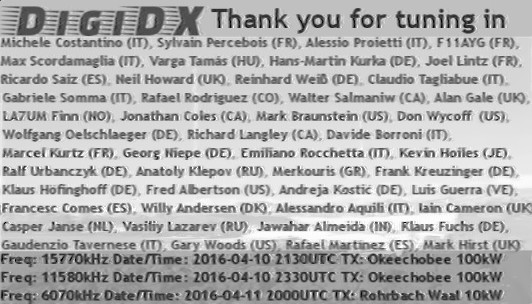
RSID: <<2016-04-25T20:24Z
OL 64-2K @
6070000+1500>>
--START--
TVRoZAAAAAYAAQAFAeBNVHJrAAAAmwD/AyhJbnRlcnZhbCBTaWduYWwgb2YgUHllb25nLXlhbmcg
QmFuZy1zb25nAP8CKENvcHlsaWdodChDKSBieSBQeWVvbmcteWFuZyBCYW5nLXNvbmcAAAAA/wMP
Q29uZHVjdG9yIFRyYWNrAP9ZAgAAAP9YBAICGAgA/1EDBbjYh0D/WQIAAAD/WAQEAhgIAP9RAxD0
R54A/y8ATVRyawAAACkA/wMMU3lzdGVtIFNldHVwAPAFfn8JAfeBcPAIQxBMAAB+APejUP8vAE1U
cmsAAABzAP8DBUNIICMxg2CwB308sApAPMABPLBbKDywXQA8sF4APLBKQDywR0A8kE9uh0CQTwAA
kExugmiQTAAAkE1ueJBNAACQT26DYJBPAACQVG6DYJBUAACQTG6CaJBMAACQTW54kE0AAJBPbodA
kE8AAP8vAE1UcmsAAABRAP8DBUNIICMyg2CxB248sQpAPMEAPLFbKDyxXQA8sV4APLFKQDyxR0A8
kUxkh0CRTAAAkUhkh0CRSAAAkUVkh0CRRQAAkUNkh0CRQwAA/y8ATVRyawAAAEAA/wMXQ0ggIzEw
IChSaHl0aG0gY2hhbm5lbCmDYLkHZDy5CkA8yQA8uVsoPLldADy5XgA8uUpAPLlHQJ48/y8A
--END--
Thank you for listening to DigiDX, please send reception reports to
reports@digidx.uk.
This is DigiDX signing off.
www.rhci-online.net/mp3/2016-04-25_DigigiDX10_UNID_base64.bin.mid
www.rhci-online.net/mp3/2016-04-25_DigigiDX10_UNID_.mp3
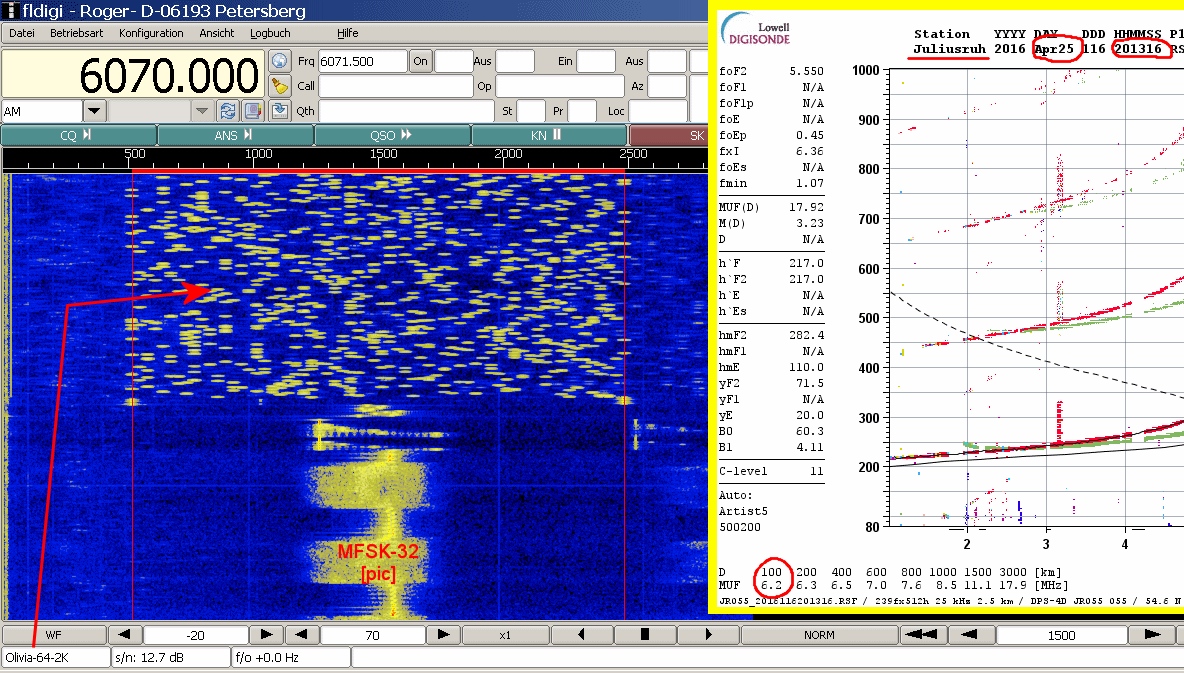
██╗ ██╗██████╗ ██████╗ ██████╗ █████╗ ██████╗ ██╗ ██████╗ ██████╗ ██████╗ █████╗ ███╗ ███╗
██║ ██╔╝██╔══██╗██╔════╝ ██╔══██╗██╔══██╗██╔══██╗██║██╔═══██╗██╔════╝ ██╔══██╗██╔══██╗████╗ ████║
█████╔╝ ██████╔╝██║ ██████╔╝███████║██║ ██║██║██║ ██║██║ ███╗██████╔╝███████║██╔████╔██║
██╔═██╗ ██╔══██╗██║ ██╔══██╗██╔══██║██║ ██║██║██║ ██║██║ ██║██╔══██╗██╔══██║██║╚██╔╝██║
██║ ██╗██████╔╝╚██████╗ ██║ ██║██║ ██║██████╔╝██║╚██████╔╝╚██████╔╝██║ ██║██║ ██║██║ ╚═╝ ██║
╚═╝ ╚═╝╚═════╝ ╚═════╝ ╚═╝ ╚═╝╚═╝ ╚═╝╚═════╝ ╚═╝ ╚═════╝ ╚═════╝ ╚═╝ ╚═╝╚═╝ ╚═╝╚═╝ ╚═╝
|
http://www.kbcradio.eu/
KBC via Nauen - scattered bursts with
Doppler shift

RSID: <<2016-0
4-24T02:22Z
MFSK-32
@
6040000+1500>>
Even squeezed to a 1-minute image, blurred by shortwave, you can
tell that this is a *multi* band radio!
Dan in Aurora, Ohio, listens to The Mighty KBC on this 1958
Zenith ...
Sending Pic:120x115C;
Zenith TransOceanic Tube Type - Classic
1958 A600
http://www.ke9ns.com/philco.html
http://www.ke9ns.com/images/DCAM0053.JPG
"........7 Band MW,SW Receiver. Coverage is almost
continuous from 550khz to 18mhz. The MW antenna is a "Wavemagnet" mounted on top
of the Radio. An external "Wavemagnet" was provided to improve reception.
SW antenna is a telescopic whip concealed inside
the case. The case is wood with a cloth covering. Most of the size of the radio
is due to the high voltage battery required to operate a tube radio (the space
below the knobs is just for the Battery).
A clever retractable 110vac line cord on the side
allows for either mains or battery operation. Made in U.S.A (Chicago,
IL)..................."
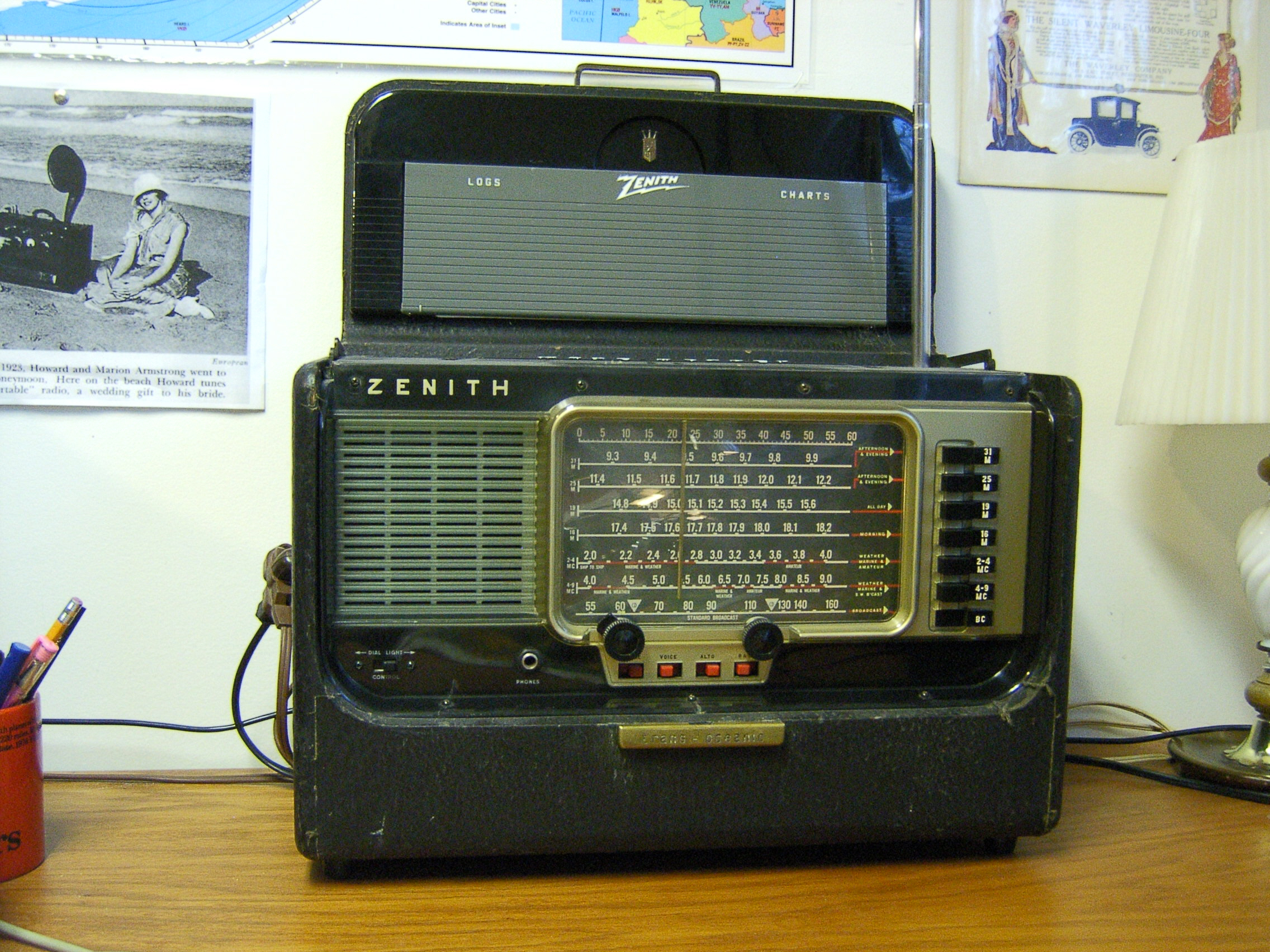
|
██╗ ██╗ ██████╗ █████╗ ██████╗ █████╗ ██████╗ ██╗ ██████╗ ██████╗ ██████╗ █████╗ ███╗ ███╗
██║ ██║██╔═══██╗██╔══██╗ ██╔══██╗██╔══██╗██╔══██╗██║██╔═══██╗██╔════╝ ██╔══██╗██╔══██╗████╗ ████║
██║ ██║██║ ██║███████║ ██████╔╝███████║██║ ██║██║██║ ██║██║ ███╗██████╔╝███████║██╔████╔██║
╚██╗ ██╔╝██║ ██║██╔══██║ ██╔══██╗██╔══██║██║ ██║██║██║ ██║██║ ██║██╔══██╗██╔══██║██║╚██╔╝██║
╚████╔╝ ╚██████╔╝██║ ██║ ██║ ██║██║ ██║██████╔╝██║╚██████╔╝╚██████╔╝██║ ██║██║ ██║██║ ╚═╝ ██║
╚═══╝ ╚═════╝ ╚═╝ ╚═╝ ╚═╝ ╚═╝╚═╝ ╚═╝╚═════╝ ╚═╝ ╚═════╝ ╚═════╝ ╚═╝ ╚═╝╚═╝ ╚═╝╚═╝ ╚═╝
http://voaradiogram.net/
RSID: <<2016-0
4-23T16:01Z
MFSK-32
@ 17580000+1500>>
Welcome to program 160 of VOA Radiogram from the Voice of
America.
I'm Kim Andrew Elliott in Washington.
Here is the lineup for today's program, all in MFSK32 except
where noted:
1:34 Program preview (now)
2:44 Can AC and DC power integrate?*
12:13 Radio Farda TV signal jammed in Iran*
16:38 New report finds media freedom declined globally*
26:53 Closing announcements*
28:17 Olivia 64-2000: Frequency schedule under music
* with image
Please send reception reports to radiogram@voanews.com.
And visit voaradiogram.net.
Twitter: @VOARadiogram
VOA NEWS
Can AC and DC Power Systems Integrate?
George Putic, KI4FNF
April 19, 2016
PITTSBURGH - More than 100 years after alternating current (AC)
defeated direct current (DC) in the so-called Battle of Currents
and became the standard way electricity was delivered, new
technologies have opened up the possibility and even the
necessity for the two systems to co-exist.
In his Power Systems Lab at the University of Pittsburgh,
professor of electrical and computer engineering Gregory Reed is
exploring the most efficient ways of integrating the two
previously almost incompatible systems.
"For many, many, decades, everything we used was run off of 120
volts AC, 60 hertz," Reed pointed out. "Well, today, most of our
end-use devices, our home electronics, our data servers, our
business systems, our lighting systems now with LEDs, so much of
our loads only need low voltage DC. Look at your computer. And so
what do we do? We plug everything into 120 volt AC which is our
legacy system. That has to be converted to low voltage DC for
these devices to operate. So we're going back to DC then, at the
very, very end for end-use devices today and that creates a lot
of inefficiency."
Do We Need Both AC and DC?
Electric energy can run through wires in two ways: in one
direction, sort of like water flowing through a pipe, or in
alternating mode, almost like pushing and pulling back and forth.
The first is called direct current, DC for short, and that is the
sort of energy we get from batteries, with a plus and minus pole.
The second is known as alternating current, or AC, and that is
the type we get from our wall sockets and almost everywhere else.
Both types of current can run electrical motors, power
lightbulbs, heat our houses, and both have advantages and
disadvantages.
In the beginning, the advantages of AC were greater, so electric
power companies opted for the one that made more economical
sense.
"It really was a fierce battle between Thomas Edison, who
advocated his system of DC technology, and Westinghouse and his
partner Nikola Tesla who were advocating AC," Reed explained.
"The disadvantage Edison really had with DC back then was he had
no way of controlling the current on the DC cables. As he began
to deliver DC to longer and longer distances, as he got to beyond
a mile (1.6 km) or more, currents got so large that it wasn't
safe. The cables had to become so large that it wasn't
economical. So in his system he needed a power plant about every
mile to feed this DC network."
This problem has now been solved. We can safely control the
currents in DC delivery lines. Suddenly, converting AC to DC for
long distance transportation opened up new possibilities.
Utilizing Both Systems' Advantages
"Beginning in the 1970s, we started to build high voltage DC
transmission systems which provided a much more efficient way
than AC for long distance transmission," Reed said, "because we
could use this power electronics conversion to control the DC.
With AC systems, we use what's called three phases, so we use
three cables and large towers to support those cables and all the
forces on them, and that's very costly over the long distance.
With DC systems we only need two of those. We call them poles, so
we only need two cables for DC. So right away we have 33 percent
less infrastructure than we have with AC systems."
Another advantage of a DC power system is that when used as a
connection between two AC systems, it prevents the so-called
‘cascading blackouts,' when a problem in one AC power line, such
as a lightning strike, triggers a domino effect that spreads
through other AC lines, leaving vast areas without power.
As Reed explains, "With DC systems, we can actually interconnect
pockets of AC networks and create subareas of AC systems through
DC inter-ties where, if we do have these problems within the
network, we can separate them instantly through the DC converters
and really eliminate the possibility of having these cascading
blackouts over large regions in the future."
DC In Our Homes and Cars
So DC is increasingly appealing for transporting energy over long
distances. But what about in our homes, factories and other
businesses? Reed says in the future, they may contain what he
calls ‘DC micro-grids.'
The electricity generated by alternative energy sources, such as
solar panels and fuel cells, is DC. It can be stored in batteries
and safely integrated with 120 volt 60 hertz AC.
"And a part of that battery storage will be in the form of
electric vehicles, and we are seeing a huge potential growth in
the electric vehicle market. So, continue to put all those
batteries in for the network, it's more and more growth of DC
entities all around us, for both loads and end-use, and so that
growth has become very strong as well," Reed said.
Full text:
http://www.voanews.com/content/can-ac-and-dc-power-systems-integrate/3292427.html
Image: Screen capture from the video version of this VOA News
report ...
Sending Pic:178x189C;

This is VOA Radiogram from the Voice of America.
Please send reception reports to radiogram@voanews.com.
From Radio Free Europe/Radio Liberty:
Radio Farda's TV Signal Jammed In Tehran
April 20, 2016
Fans of Breakfast With News, RFE/RL's Persian Language Satellite
TV broadcast, woke up to a scrambled screen April 8. The daily,
one-hour news and analysis show is produced by RFE/RL's Persian
Language Service, Radio Farda, and aired on Voice of America's
satellite channel.
After being alerted by viewers, Radio Farda confirmed the
satellite signal has for the last 12 days been jammed in Tehran
and other large cities in Iran, and only during the normal
broadcast time of Morning With News. The audio of the popular
program is broadcast on AM and short wave radio, and is so far
unblocked.
Even though Facebook is blocked in Iran, Radio Farda's Facebook
page has over 1.5 million fans. Audiences must use proxy servers
to access both Facebook and Radio Farda's website.
Family members of Radio Farda staff have been interrogated,
coerced, and threatened by secret police in more than 20
incidents between 2012-2015. Iran has set up phony websites and
social media profiles to discredit Farda reporting, and has
targeted Farda journalists in over 15 documented cases of on-line
harassment.
http://www.rferl.org/content/iran-jamming/27686740.html
Sending Pic:231x130C;

RFE/RL also faces the possible blocking of its website about
Crimea:
Crackdown On RFE/RL's Crimea Site Sparks International
Condemnation
April 20, 2016
http://www.rferl.org/content/crimea-crackdown-rfe-rl-condemnation-semena/27686283.html
This is VOA Radiogram from the Voice of America.
Please send reception reports to radiogram@voanews.com.
New Report Finds Media Freedom Declined Globally
VOA News
April 20, 2016
There has been a "deep and disturbing decline" in respect for
media freedom at levels both regional and global, the media
rights group Reporters Without Borders said in its annual report.
The 2016 World Press Freedom Index, released by the group
Wednesday, said the world is entering a "new era of propaganda"
and a reluctance to engage in free debate.
The group said many world leaders have developed "paranoia" about
journalists and are cracking down on the media, while privately
owned media outlets are increasingly under pressure from
corporate interests.
"The climate of fear results in a growing aversion to debate and
pluralism,'' said Christophe Deloire, secretary-general of the
Paris-based Reporters Without Borders.
"All of the indicators show a deterioration. Numerous authorities
are trying to regain control of their countries, fearing overly
open public debate," Deloire said.
He said new technologies allow leaders to appeal directly to the
public, "so there is a greater degree of violence against those
who represent independent information."
"We are entering a new era of propaganda where new technologies
allow the low-cost dissemination of their own communication,
their information, as dictated. On the other side, journalists
are the ones who get in the way," Deloire added.
"All of the indicators show a deterioration. Numerous authorities
are trying to regain control of their countries, fearing overly
open public debate," Deloire said.
He said new technologies allow leaders to appeal directly to the
public, "so there is a greater degree of violence against those
who represent independent information."
"We are entering a new era of propaganda where new technologies
allow the low-cost dissemination of their own communication,
their information, as dictated. On the other side, journalists
are the ones who get in the way," Deloire added.
Report findings:
• Reporters Without Borders said the situation is particularly
grave in Latin America and cited institutional violence in
Venezuela and Ecuador, organized crime in Honduras, impunity in
Colombia, corruption in Brazil and media concentration in
Argentina.
• Eritrea was ranked the worst worldwide – 180th out of 180 -- in
overall media freedom, falling below Syria, China and North
Korea.
• Finland was ranked No. 1 -- for the sixth year in a row --
followed by the Netherlands and Norway.
• The U.S. ranked No. 41 in the report, with the report citing
cybersurveillance as a major problem.
• Individual countries that rose most in the 2016 report include
Tunisia -- to No. 30 from No. 96 – due to a decline in violence
and legal proceedings, and Ukraine – to No. 22 from No. 107 --
because the conflict in the east of the country has abated.
• Individual countries that fell the furthest include Poland, to
No. 47 from No. 29; Tajikistan, to No. 150 from No. 116; Brunei,
to No. 155 from No. 121; and Burundi, to No. 156 from No. 145.
• The report attributed the declines to a rise in the
authoritarian nature of some governments, such as those in
Tajikistan, Egypt and Turkey; security situations that have
become more dangerous, such as in Libya, Yemen and Burundi;
blasphemy laws, such as in Brunei, and tighter government control
of state-owned media, such as Poland.
• By region, Europe still has the freest media, followed by
Africa, the Americas, Asia and Eastern Europe/Central Asia. North
Africa/Middle East is still the region where journalists are most
subjected to constraints of every kind.
Self-censorship
The effect of these obstacles to press freedom is
self-censorship, Reporters Without Borders said.
The group also noted that media freedom is damaged by governments
that are quick to suspend Internet access to their citizens.
The report said every continent has seen a decline in media
freedom over the past three years.
The index measures indicators such as media independence,
self-censorship, the rule of law, transparency and the safety of
journalists in 180 countries.
Information for the study is based on questionnaires in 20
languages filled out by experts around the world as well as on
quantitative data on abuses and acts of violence perpetrated
against reporters.
http://www.voanews.com/content/report-media-freedom-declines-globally/3293474.html
See also:
http://www.rferl.org/content/article/27685420.html
http://www.rfa.org/english/asia-media-04202016170801.html
http://rsf.org/ranking
Image: World Press Freedom Index map, with black denoting "very
serious situation" and red "difficult situation" ...
Sending Pic:287x174C;
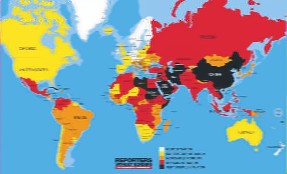
Please send reception reports to radiogram@voanews.com.
And visit voaradiogram.net.
Twitter: @VOARadiogram
Thanks to colleagues at the Edward R. Murrow shortwave
transmitting station in North Carolina.
I'm Kim Elliott. Please join us for the next VOA Radiogram.
This is VOA, the Voice of America.
Sending Pic:209x19C;

RSID: <<2016-04-23T16:28Z
OL 64-2K @ 17580000+1500>>
VOA Radiogram transmission schedule
(days/times UTC):
Sat 0930-1000 5745 kHz
Sat 1600-1630 17580 kHz
Sun 0230-0300 5745 kHz
Sun 1930-2000 15670 kHz
All via North Carolina
www.rhci-online.net/radiogram/radiogram.htm
DRM-images
-
received
via EASYPAL/DSSTV
on 14233kHz/USB
(FRG-100 / Dipol for ~12 MHz)
Here
are some pics of
K8BM
[Robert
Meinerding,
("Bob"), Cincinnati 45247, United States, OH,
United States]
received in the last time:
http://qrzcq.com/call/K8BM
http://www.k8bm.net/
|
Equipment |
Biography: |
|
Rig - Kenwood TS570D, TS570s
Antennas - Mosley TA34XLWARC, Inverted
VEE 40-80 Meters
Software - EasyPal, Fldigi, MMSSTV, EQSL
Logging
Amplifier - Amertron AL80B
Computer - HP desktop Windows 7
Favorite Bands - 20m, 17m, 15m. 12m, 10m
Favorite modes - SSB, SSTV, JT65, PSK31
|
80 years old, Licensed in 1950 as W8HBR, later changed call to K8BM
More information on www.k8bm.net
|



